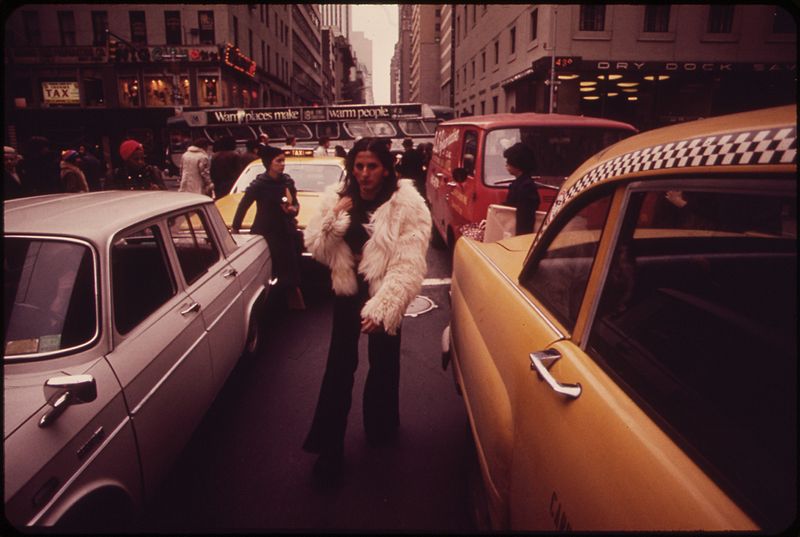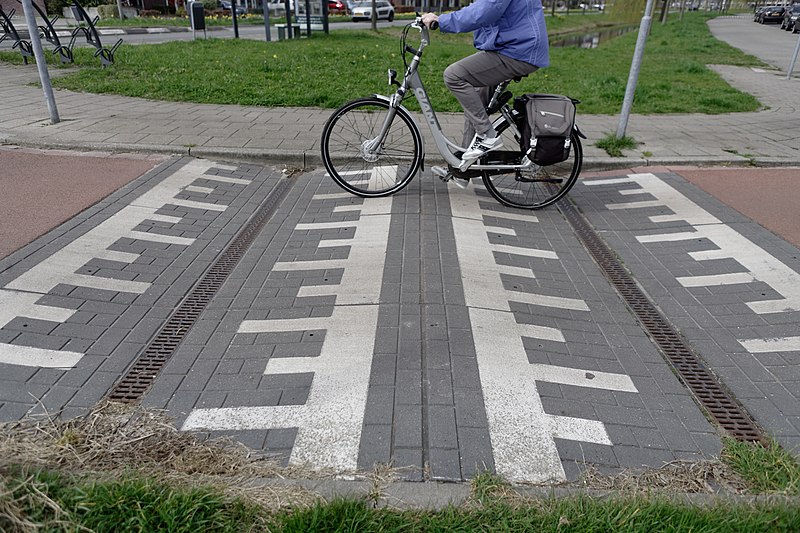The invention of one incredibly minor traffic offense had massive consequences for legal systems around the world. When did we lose the right to cross the street wherever and whenever we wanted?
Featured image: Pedestrians jaywalk in midtown Manhattan in the 1970s, before modern crackdowns on jaywalking. (Image source)
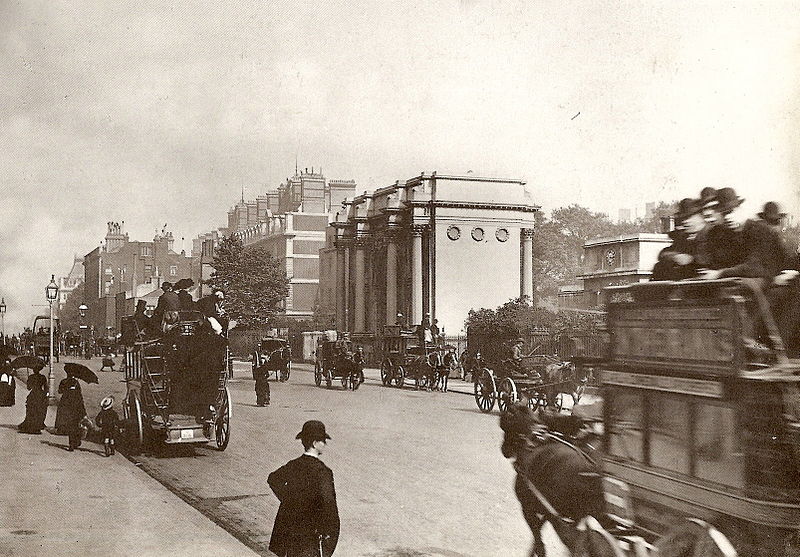
A photograph of London’s Marble Arch area taken in 1890. As you can see in this typical street scene, there are no street markings, pedestrians are crossing wherever they want, and carriages are driving on both sides of the street. (Image source)
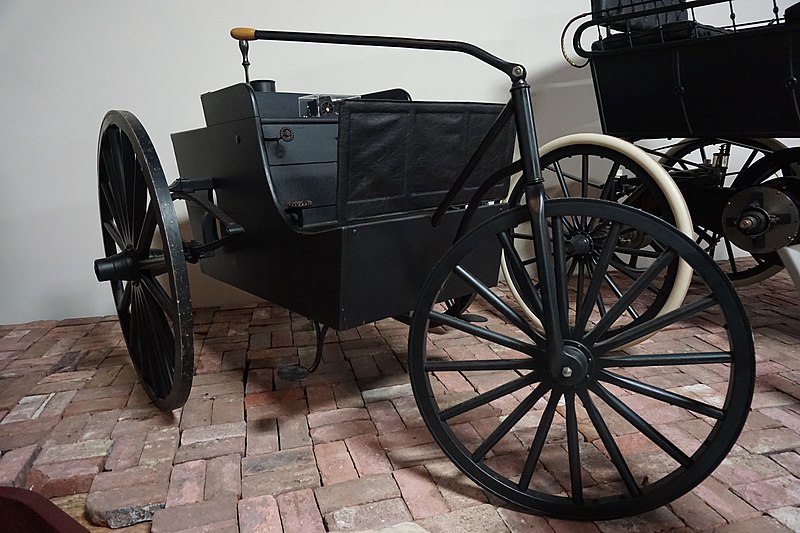
A replica of Ransom E. Old’s steam carriage from the 1880s. (Image source)
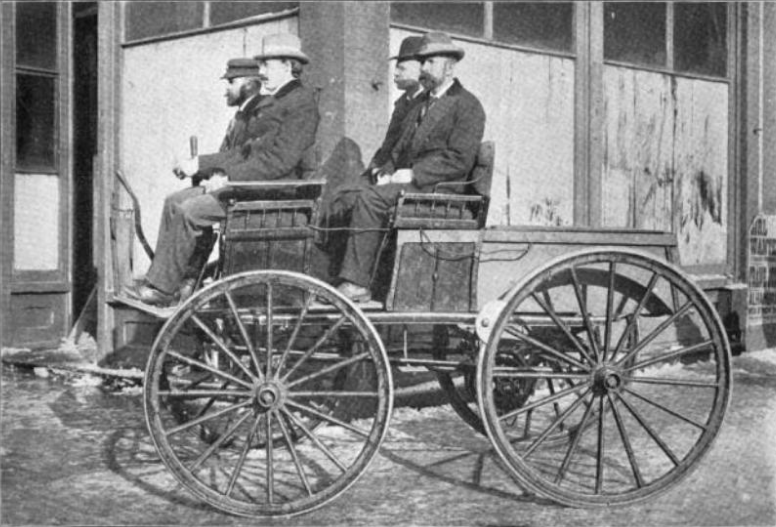
An electric car from 1895. This was modified to be a racecar–although it didn’t go very fast by today’s standards. (Image source)
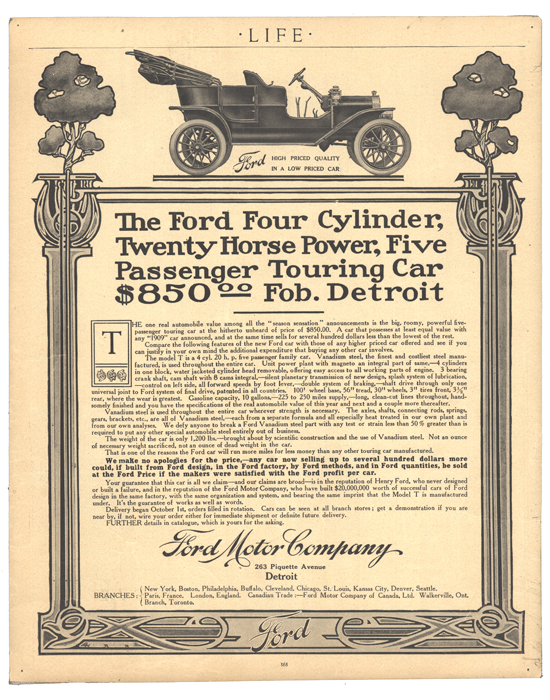
A 1908 advertisement for the Ford Model T, a gas-powered car that would change the automobile industry forever. (Image source)
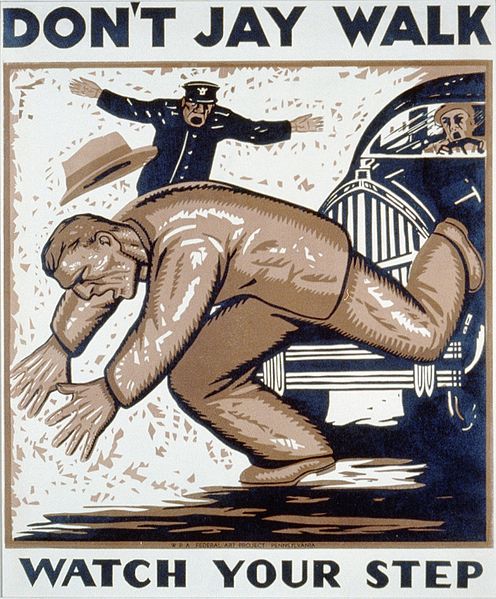
A poster from 1937 reminding pedestrians not to jaywalk. (Image source)
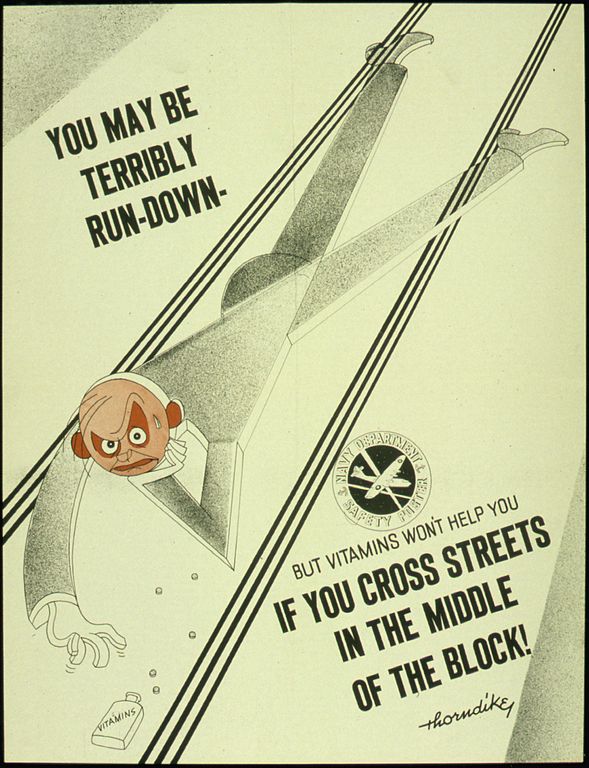
A 1940s poster from the American Office for Emergency Management, which is doing a two-for-one PSA by encouraging you to take vitamins and not cross the street in the wrong spot. (Image source)
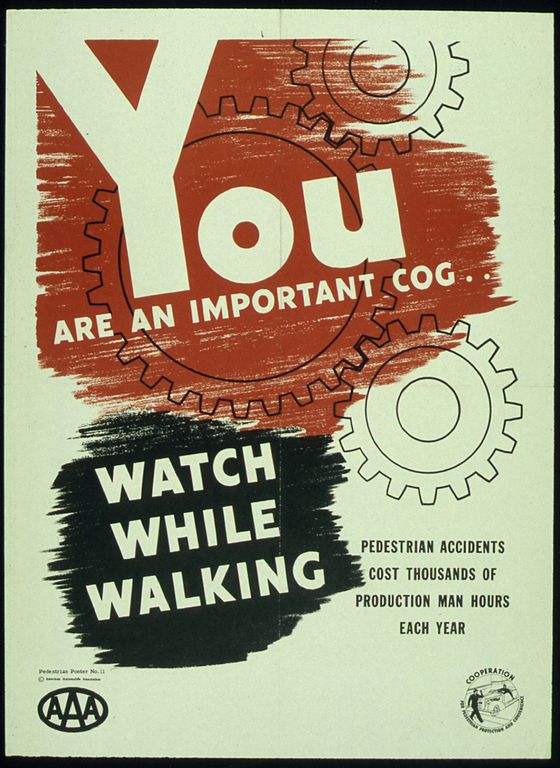
Another poster from the 1940s, this one by the AAA. (Image source)
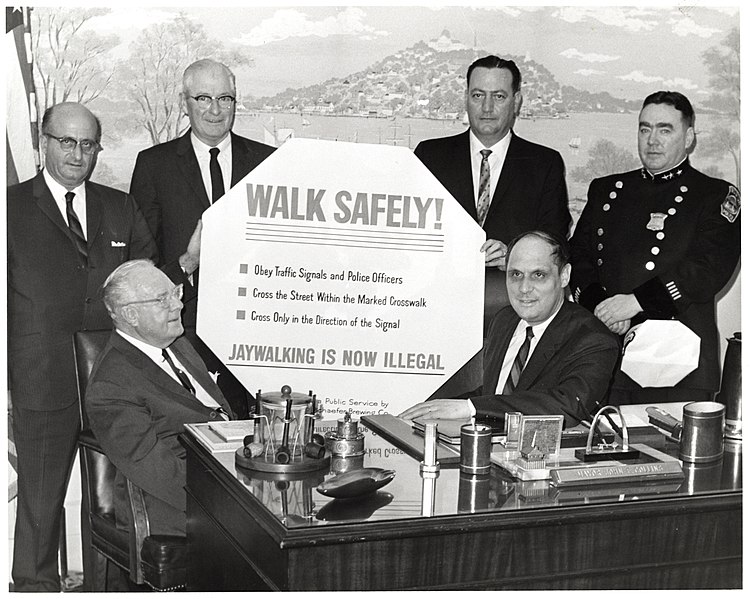
Deputy Mayor Henry Scagnoli of Boston celebrates making jaywalking illegal in the 1960s. (Image source)
A modern road in the Netherlands with a traffic-calming double dip speed bump. Dutch urban design over the last few decades has prioritized traffic calming, road sharing, and pedestrian areas to reduce traffic fatalities. (Image source)
Seattleites wait for the light to change instead of crossing the street against the light during a Superbowl celebration. Seattle’s “polite riot” made national headlines as videos like this circulated.
Sources
Jaywalking and traffic laws
- Medieval Traffic Problems
- London traffic rules of the 1800s
- Road Traffic History – Before the Streets Got Swamped
- Locomotive Act 1861
- Traffic signals: A brief history
- The Life of Eno
- Why Jaywalking is Called Jaywalking
- The Jay Walker
- Regulating Foot Traffic
- Lawmakers Play With Auto Bill
- The secret history of jaywalking: The disturbing reason it was outlawed — and why we should lift the ban
- Newsom vetoes jaywalking bill aimed at easing fines
- Littering & Jaywalking in Singapore
- He was caught jaywalking. He was almost deported for it.
- NYPD Targets Blacks and Latinos for ‘Jaywalking’ Tickets
- De Blasio jaywalks as he preaches road safety
- Where “Jaywalking” Is Not a Crime
- How the Dutch Delivered a Traffic Safety Revolution
The history of the automobile
- Locomotive
- History of the automobile
- Who invented the automobile?
- Early electric automobiles
- History of Cars – The Early 1900s Cars
- Speeding Kills!
- Model T
- When was the first traffic light installed?
Miscellaneous sources
- Infractions
- Inflation calculator
- jay (n.)
- Motor vehicle fatality rate in U.S. by year
- Pulled Over: An investigation into traffic stops across America and the deaths of hundreds of motorists at the hands of police
- SDOT Adopts Policy Change to Allow More Marked Crosswalks Without Red Tape
